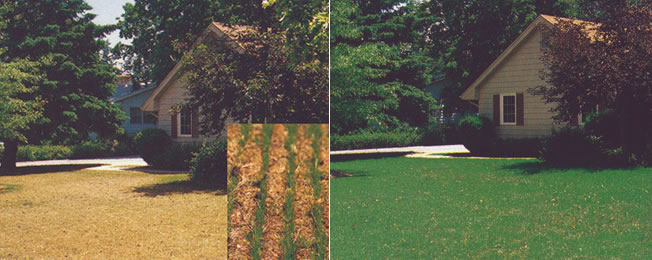Work with the natural components of the soil and the grass by mulching a new lawn with about 1 4 inch of straw peat moss dried grass or sawdust.
Freshly seeded lawn matted over.
Newly seeded lawn about two times.
Treat any broadleaf weeds that have popped up in your lawn.
Done right it s a straightforward process that gets results.
Here is how to inspect your grass for rooting.
This lawn has been seeded with an all in one product that has fertilizer and mulch mixed in with the grass seed.
Straw is made of the stems of grass plants while hay contains the stem plus the flowers and seeds.
As grasses mature thinning is normal especially if you enjoy your lawn and use it often.
To cut down on weeds further your best bet is keeping your.
Still straw will contain some amount of seed from farm grasses and weeds.
Low viability will force you to re seed.
What to cover new grass seed with.
Refer to the label of your product for specific instructions.
Straw is preferred to hay as a grass seed mulch because of its lower seed content.
Go to the edges of your lawn and lift up some of the freshly.
Without existing grass to help the seeds may not get enough moisture and heat to help.
How often to water new grass seed.
After the appropriate amount of time has passed you can spot.
In general a four week period needs to pass after your.
Before you cast out new grass seed it s important to start with watering.
In such a case walking on your lawn will be inevitable.
Always wait for two weeks before walking on your lawn.
Watering new grass seed is a simple process that only requires a small investment of time.
Mowing your newly seeded grass requires observation of your seedlings so that you do not damage them by cutting the blades too soon.
This should be after verification of root development on your freshly sown grass.
When seeding a new lawn getting the grass to grow can be a challenge.
Overseeding keeps your lawn competitive and steeped in youth and vigor without starting over from scratch.
Overseeding is spreading grass seed over an existing lawn.
These plants are undesirable in a new lawn.

